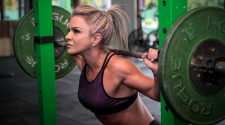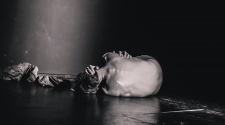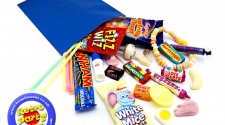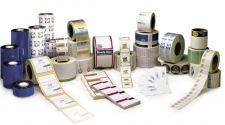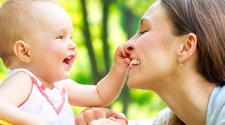To help clinicians and analyze autism, a test of saliva is projected to be accessible by July. The test is helpful to diagnose the levels of 32 tiny RNA molecules present in saliva that the researchers believe differentiates autistic children from controls. However, on the other hand, some specialists are doubtful of the test’s reliability and worth, stating the examination it depends on is excessively preliminary with regards to use of clinics.
The test, named Clarifi, is developed by Quadrant Biosciences. With regards to the test utilization, an organization based in New York has obtained authorization from the U.S. Centers with regards to Medicare and Medicaid services, the governing body that supervises lab tests. At the time it is available in the market, the cost of the test is anticipated to be around $989.
Clarifi is the most recent in a category of biological tests with regards to autism established in the previous year. The organization based in the Wisconsin “Stemina” introduced a blood test for autism In November. Furthermore, one more team is in the beginning stage of creating a urine test with regards to autism2.
Similar to other tests, Clarifi is planned to be utilized related to different perspectives and investigative tools. “It would make the way with regards to autism analysis increasingly effective with the help of offering a targeted approach to flag just those children who are in need of further assessment,” says the company officials.
Children aged between 18 months to 6 years, and have high scores on an autism screen, clinicians would ask a test kit from the organization, for example, the Modified Checklist with regards to Autism in Toddlers (M-CHAT), states Richard Uhlig, Quadrant’s CEO. In the procedure, they would obtain a saliva swab from the child and return to Quadrant. The organization would then issue a ‘possibility diagnosis’ with regards to autism. In this case, as per the statement of Uhlig, children having scored over 50% are probably going to get an autism diagnosis.
Though, the precision of Clarifi’s in this situation relies upon the prior screen. In this case, for example, the M-CHAT precisely distinguishes only around 33% of autistic children at the age of 18 months. The precision of M-CHAT increases with age and is around 69% for children above 20 months.
In November in Frontiers in Genetics, Quadrant issued some of the research-based on Clarifi. Based on that, the organization observed that its test precision gets 82% of autistic children and distinguishes 88% of children who don’t have the condition. However, the experts utilized Clarifi in isolation without a prior screening test.
The promotional material of the company contrasts Clarifi straightforwardly with standard diagnostic tests, stating it is objective and “does not rely upon someone rating somebody’s behavior at one specific point in time.” However, specialists state the data don’t back up these statements.
As per the statement of Dorothy Bishop, professor of developmental neuropsychology at the University of Oxford in the United Kingdom, “There’s no harm in attempting this and reporting it to the writing.” On the other hand, “what they are declaring based on the marketing is that it by one way or another benefit or improve the realistic analysis besides these other diagnostic instruments.” “I believe there’s no proof of that,” she says.
As per the statement of Uhlig, they don’t plan to point toward Clarifi that it could be utilized in place of standard diagnostic tests.
Rapid Findings:
The test relies upon the research in 456 children — 238 with autism, from which 84 with developmental delay, and 134 controls, who visited clinics in Pennsylvania, New York, and California during 2015 and 2017.
The experts examined tiny RNA molecules present in the saliva of 372 children, incorporating 188 having autism and 71 having developmental delay; a few of the RNA is from microbes available in the children’s mouths. (The analysts left out from the examination children having unfilled cavities, dental issues or upper respiratory disorders.) The team analyzed the amount of five kinds of RNA, which incorporates microRNA and noncoding RNA.
In this case, they made use of an AI algorithm with regards to rank the molecules by their capability to recognize the autistic children from the two other groups. They at last identified a panel of 32 RNAs. The test investigates levels of these molecules in every saliva test.
The experts assessed the test in the rest of the 84 participants. The test effectively distinguished 41 of 50 autistic children, 12 of 13 children with developmental delay and 18 of 21 controls. The numbers appear to be encouraging, however, to guarantee that the test complements the M-CHAT, the experts would require to observe how well the test forecasts autism in children flagged by that screening tool, states Bishop.
She further states, “To state, it complements M-CHAT isn’t proof-based and is hopeful thinking.” “The scientists would require to demonstrate that their test made the recognizable proof of those with autism progressively precise. Based on the fact that they didn’t do that study, we don’t have a clear idea in case it is valid.”
As per the statement of Quadrant officials, they are conducting a follow-up examination of 750 children who screened positive on the M-CHAT. They have enlisted 200 children so far.
Variable Aspects:
A small number of specialists question the test’s evidence and state the examination’s outcomes might be skewed by other elements. For example, on the grounds that the test relies on some microbes located in the mouth, it might be impacted by a child’s oral hygiene, and it might change every day dependent on the child’s eating routine.
As per the statement of Nikolaos Mellios, assistant professor of neuroscience at the University of New Mexico in Albuquerque, “This isn’t something you would like to include in a test.” “You need something that will be explicitly impacted in the patients and won’t be impacted by some other confusing elements.”
As per the officials of the company, the test relies on these components. For example, they state the test algorithm alters for the time of day the test was given, as RNA levels change methodically during the day. The algorithm additionally alters for eating limitations and the amount of time since the child last ate and brushed teeth.
As per the statement of lead researcher Frank Middleton, “In case we didn’t realize that we could measure the same thing in a repeated manner, we wouldn’t have pushed this upon anyone.” On the other hand, some note that the RNAs in the panel don’t cover with those in a human only panel represented prior this year. As per the Quadrant scientists, it is on the grounds that the two examinations utilized various algorithms to recognize the related RNAs.
As per the statement of Peng Jin, professor of human genetics at Emory University in Atlanta, Georgia, “RNA is supposed to perform different jobs in autism; however, there’s little proof that RNAs in saliva summarize movement in the brain.” The organization started promoting the test through social media around six months ago. As per the officials, they intend to announce its release by July.
Author’s Bio:
Joseph Carey is a specialist art therapist and specialized in analyzing children’s drawings. He is a graduate of Lesley University. Furthermore, he has completed studies in neuropsychology and parental guidance. In case you are in search of neuropsychological evaluation for child near me, and you can get the advice from him.




